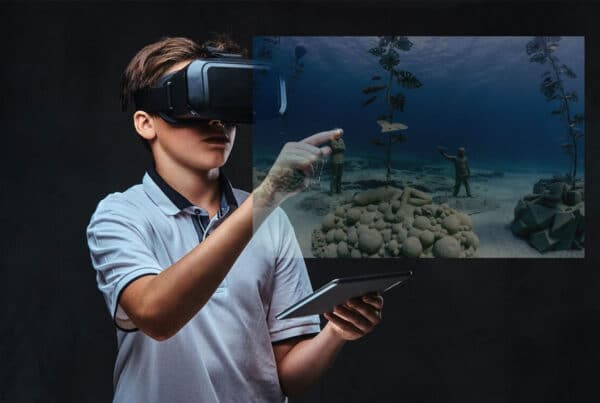
Introduction
360 video tours have gained significant popularity across various sectors, including real estate, hospitality, and education. These immersive experiences allow users to explore spaces interactively, providing a unique perspective that traditional media cannot match. However, one of the most common questions surrounding 360 video tours is whether they are expensive to create. This article will explore the costs associated with producing 360 video tours, including equipment expenses, professional services, and ongoing costs, helping businesses make informed decisions about their investment.
Understanding the Costs of Creating 360 Video Tours
Equipment Costs
The first consideration when creating a 360 video tour is the equipment needed. Depending on whether you choose to go the DIY route or hire professionals, your equipment costs can vary significantly.
1. Cameras
- Single-Lens Cameras: These cameras capture a full 360-degree image using a single lens with a wide-angle view. Prices for single-lens cameras like the Insta360 One X2 typically start around $400.
- Dual-Lens Cameras: Dual-lens cameras offer improved image quality and are designed to capture more detail. Models like the Ricoh Theta Z1 range from $300 to $1,000 depending on specifications.
- Professional Multi-Lens Cameras: For high-end production needs, multi-lens cameras such as the Insta360 Pro 2 can cost upwards of $1,000 to $3,000. These cameras are ideal for businesses looking to create high-quality virtual tours for marketing or promotional purposes.
2. Additional Equipment
In addition to cameras, other equipment may be necessary:
- Tripods: A sturdy tripod is essential for stabilizing your camera during shoots. Prices range from $50 to $200 depending on the model.
- Memory Cards: High-capacity memory cards are needed to store large video files. Expect to pay around $20 to $50 for a quality card.
- Lighting Equipment: Proper lighting can significantly enhance video quality. Portable LED lights or softboxes can cost between $50 and $200.
Professional Services
For many businesses, hiring professionals to create 360 video tours can be a worthwhile investment.
1. Hiring a Professional Photographer
The cost of hiring a professional photographer or videographer varies based on experience and location. According to industry sources:
- Basic Packages: Hiring a professional for a basic 360 video tour can cost around $200 to $500 for smaller spaces or residential properties.
- Comprehensive Packages: More extensive packages that include multiple scenes, editing, and additional features may range from $500 to several thousand dollars depending on the complexity of the project.
2. Virtual Tour Companies
Many companies specialize in creating virtual tours and may offer comprehensive packages that include photography, editing, and hosting services.
- Standard Pricing: Some companies charge flat fees per tour, typically starting at around $100 for basic tours and going up to $1,000 or more for complex projects.
- Subscription Services: Some providers offer subscription plans that include ongoing support and hosting for virtual tours. Monthly fees can range from $12 to $69 based on the features included.
Ongoing Costs
Beyond initial setup costs, businesses should also consider ongoing expenses associated with maintaining 360 video tours.
1. Hosting Fees
Most 360 video tours require hosting on a platform that supports interactive content. Hosting fees can vary widely based on the provider:
- Monthly Hosting Plans: Services like Matterport charge around $69 per month for their most popular plan, while other platforms may offer lower-cost options starting at around $12 per month.
- Flat Fee Options: Some companies charge a flat fee per tour for hosting services, which can range from $16 to over $100 depending on the features provided.
2. Maintenance and Updates
Regular maintenance may be necessary to ensure that your virtual tours remain functional and up-to-date.
- Content Updates: If you change your space or offerings frequently (such as in retail or hospitality), you may need to reshoot and update your virtual tour regularly. This could incur additional photography and editing costs.
- Technical Support: If you encounter issues with your virtual tour platform or require assistance with updates, you may need to factor in costs for technical support services.
Comparing DIY vs. Professional Creation
When considering whether creating a 360 video tour is expensive, it’s essential to weigh the benefits of DIY versus hiring professionals.
DIY Approach
- Lower Initial Costs: Going the DIY route allows you to save money on labor costs associated with hiring professionals.
- Learning Curve: However, creating high-quality 360 video tours requires time and effort to learn how to use the equipment effectively and edit the footage properly.
- Quality Control: The final product may not match the quality of professionally produced tours unless you invest significant time in learning best practices.
Professional Creation
- Expertise and Quality: Hiring professionals ensures high-quality results due to their experience and knowledge of best practices in capturing immersive content.
- Time Savings: Professionals handle all aspects of production—from shooting to editing—allowing you to focus on other business priorities.
- Cost Considerations: While initially more expensive than DIY options, professional services can lead to better ROI through enhanced customer engagement and increased conversions.
Conclusion
Creating 360 video tours involves various costs that can vary significantly based on factors such as equipment choices, professional services utilized, and ongoing maintenance needs. While specialized cameras and additional equipment represent an upfront investment, hiring professionals can provide high-quality results that enhance user engagement and improve marketing efforts. Ultimately, whether creating a virtual tour is considered expensive will depend on your specific needs and resources available. Businesses should carefully evaluate their goals—whether opting for DIY solutions or investing in professional services—to determine the best approach for their unique circumstances. As technology continues evolving and more industries embrace immersive experiences like 360 video tours as part of their marketing strategies or customer engagement efforts, understanding these costs will be crucial for making informed decisions about investments in this innovative medium.




